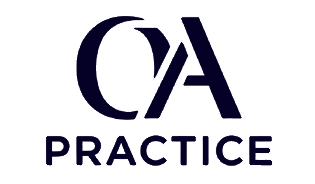D429 Introduction to AI for Computer Scientists - Set 1 - Part 1
Test your knowledge of technical writing concepts with these practice questions. Each question includes detailed explanations to help you understand the correct answers.
Question 1: You are designing an AI system for a hospital emergency room that must prioritize patient treatment based on symptoms. Which type of agent architecture would best handle this dynamic, partially observable environment where decisions impact human lives?
Question 2: A robotics company needs to represent knowledge about assembly line procedures that change based on product variations. Which knowledge representation method would best capture both the relationships between components and time-dependent assembly sequences?
Question 3: Your team is developing a customer service chatbot that must understand context from previous messages in a conversation. Which natural language processing architecture would most effectively maintain and utilize this conversational context throughout extended dialogues?
Question 4: An autonomous vehicle encounters a scenario where its sensors cannot fully detect all surrounding objects due to heavy fog. How should the vehicle's agent architecture classify this environment, and what decision-making approach would be most appropriate?
Question 5: A financial institution wants to detect fraudulent transactions using machine learning but has very few examples of actual fraud compared to legitimate transactions. Which approach would best address this unbalanced dataset challenge while maintaining high fraud detection accuracy?
Question 6: You need to implement a recommendation system that learns user preferences by observing their choices without explicit reward signals. Which machine learning approach would best discover these hidden preference patterns from user behavior data?
Question 7: A medical diagnosis AI system must explain its reasoning to doctors and patients. Which combination of techniques would best provide both accurate diagnoses and interpretable explanations that healthcare professionals can understand and verify?
Question 8: Your company needs to train an AI model using sensitive customer data from multiple branch offices without centralizing the data. Which privacy-preserving technique would enable collaborative model training while keeping customer data locally secured?
Question 9: An e-commerce platform experiences the Sybil attack problem where fake accounts manipulate product ratings. Which combination of AI techniques would most effectively detect and prevent these coordinated fake identity attacks on the rating system?
Question 10: A manufacturing quality control system needs to identify defects in products using camera images under varying lighting conditions. Which computer vision approach would best handle this challenge of inconsistent illumination while maintaining accurate defect detection?
Question 11: You're developing an AI assistant that must understand when users express uncertainty versus definite statements. Which type of logic system would best capture and reason about these different levels of certainty in natural language expressions?
Question 12: A smart city traffic management system needs to optimize traffic flow by predicting congestion patterns. Which combination of data types and preprocessing techniques would provide the most comprehensive understanding of traffic behavior?
Question 13: Your team discovered that an AI hiring system shows bias against certain demographic groups. Which data preprocessing technique would most effectively address this bias while maintaining the model's ability to identify qualified candidates?
Question 14: A retail chain wants to predict customer purchase behavior using both online browsing data and in-store purchase history. Which machine learning paradigm would best utilize this combination of labeled purchase data and unlabeled browsing patterns?
Question 15: An agricultural AI system needs to distinguish between healthy and diseased crops using drone imagery. Which neural network architecture would most effectively identify disease patterns that appear as irregular shapes across plant surfaces?
Question 16: A news aggregation platform needs to group similar articles from thousands of sources without predefined categories. Which unsupervised learning algorithm would best organize these articles into meaningful topic clusters automatically?
Question 17: Your organization needs to ensure its AI system complies with data privacy regulations while maintaining model performance. Which technique provides mathematical guarantees about individual privacy protection during model training on sensitive datasets?
Question 18: A voice assistant must process commands where users might say similar things in different ways. Which natural language processing technique would best map these varied expressions to the same underlying intent or meaning representation?
Question 19: A logistics company needs to optimize delivery routes considering multiple constraints like traffic, weather, and delivery windows. Which AI approach would best handle this complex optimization problem with multiple competing objectives?
Question 20: Your team needs to detect subtle changes in manufacturing equipment performance that might indicate future failures. Which data quality dimension is most critical for this predictive maintenance application to function effectively?
Need Guaranteed Results?
Our exam support service guarantees you'll pass your OA on the first attempt. Pay only after you pass!
Get Exam Support